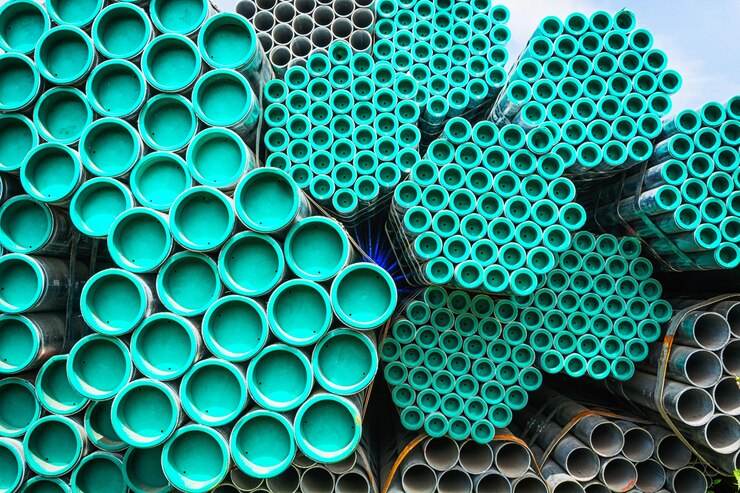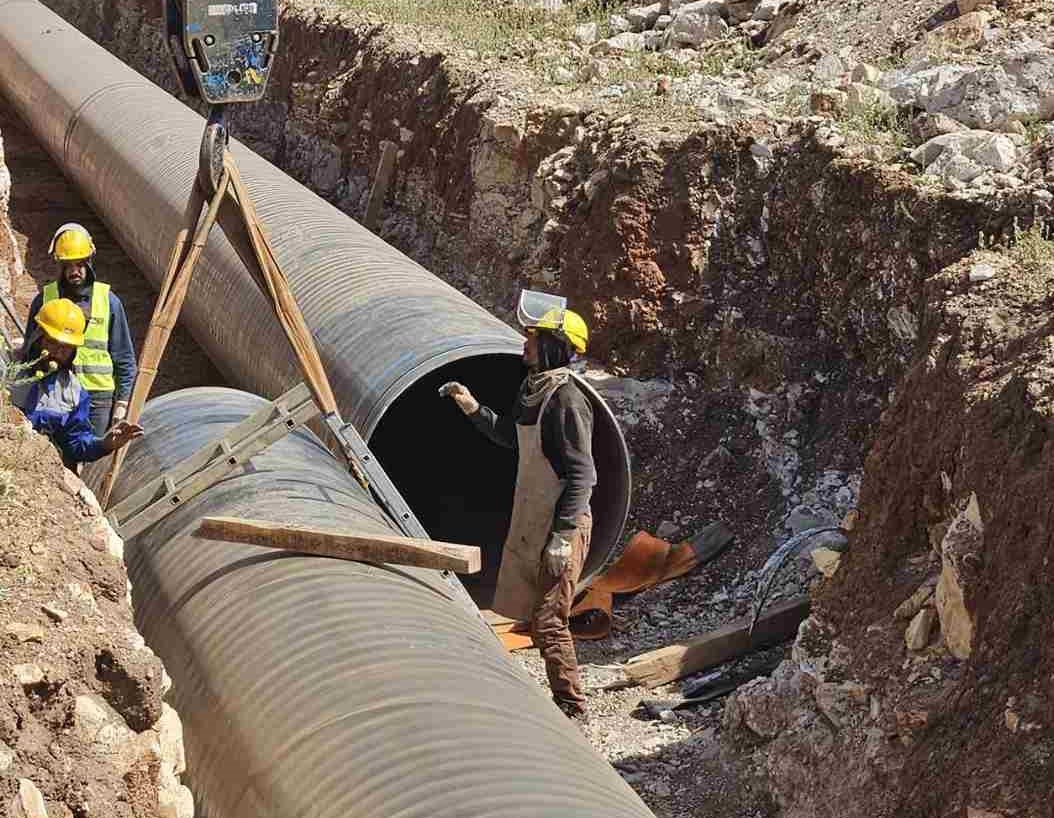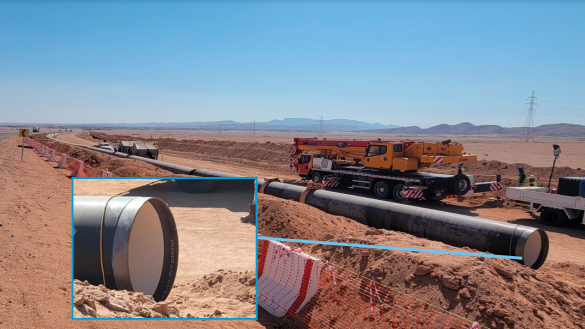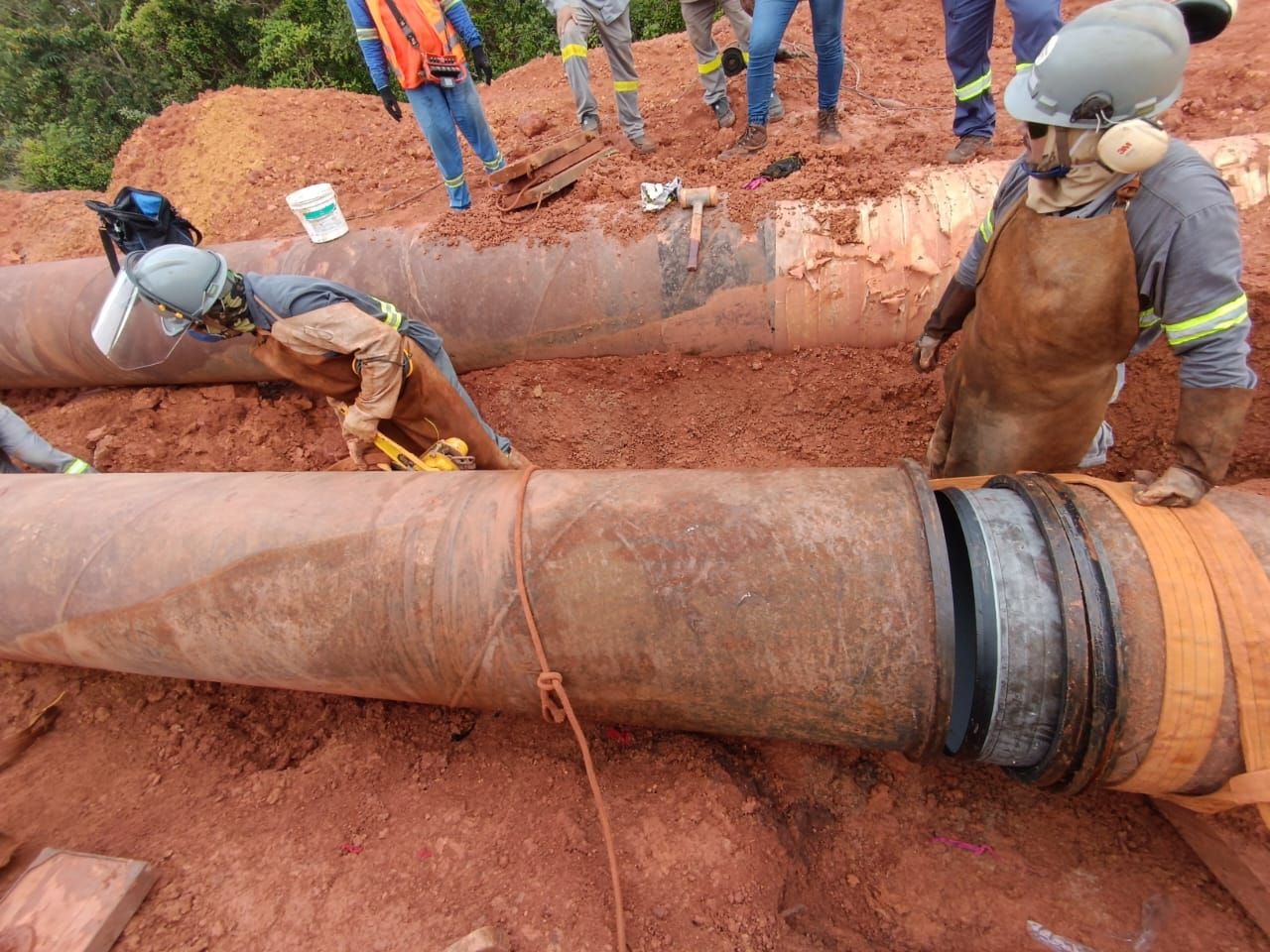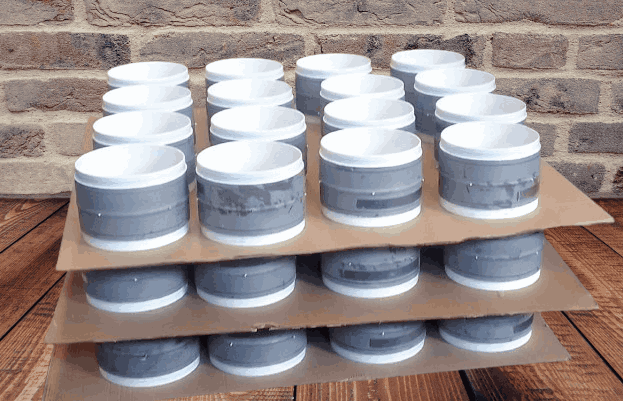Are you looking for a comprehensive guide on applying FBE coating in pipelines? Look no further! In this step-by-step article, we will take you from start to finish, providing all the information you need to know about applying FBE coating effectively.
FBE (Fusion Bonded Epoxy) coating is widely used in oil and gas to protect pipelines from Corrosion and extend their service life. However, the application process can be complex and requires careful consideration. We’ve created this ultimate guide to help you navigate the process confidently.
From surface preparation to applying the coating and curing it, we will walk you through each step in detail, highlighting best practices and potential challenges. We’ll also provide insights into the benefits of Fusion Bonded Epoxy coating and how it compares to other coating methods.
Whether you’re a pipeline operator, an engineer, or someone interested in the industry, this guide is a must-read. So, let’s dive in and learn everything there is to know about applying FBE coating in pipelines.
Why Is FBE Coating Important For Pipelines?
Pipeline corrosion is a significant concern in the oil and gas industry. Corrosion can lead to leaks, spills, and costly repairs. That’s where Fusion Bonded Epoxy coating comes in. Fusion Bonded Epoxy coating provides a protective barrier between the pipeline material and the surrounding environment, preventing corrosion and extending the pipeline’s lifespan.
Furthermore, Fusion Bonded Epoxy coating is especially effective in harsh environments, such as offshore applications or areas with high soil corrosivity. It has excellent adhesion properties, ensuring the coating remains intact even under extreme conditions. Additionally, Fusion Bonded Epoxy coating is resistant to chemicals, abrasion, and impact, further enhancing its protective capabilities.
Understanding The Fusion Bonded Epoxy coating Process
To apply Fusion Bonded Epoxy coating successfully, it’s essential to understand the coating process. We can divide the Fusion Bonded Epoxy coating process into four main steps: first, surface preparation, using the coating, curing, and inspecting the layer. Let’s inspect each stage.
Preparing the Pipeline for Fusion Bonded Epoxy coating
The first step in the Fusion Bonded Epoxy coating process is surface preparation. Proper surface preparation ensures good adhesion between the pipeline and the coating. Moreover, it involves cleaning the pipeline surface to remove contaminants like grease, oil, dirt, or rust.
However, to achieve the desired surface profile, the surface preparation process typically includes mechanical cleaning methods, such as abrasive blasting or grinding. Additionally, the surface profile helps the coating adhere to the pipeline surface effectively.
After automatic cleaning, you need to thoroughly clean the pipeline using solvents or detergents to remove residual contaminants.
Applying the Fusion Bonded Epoxy coating
Once the pipeline surface is appropriately prepared, applying the Fusion Bonded Epoxy coating is time. We typically apply the Fusion Bonded Epoxy coating using a powder coating spray gun or an electrostatic fluidized bed process. Both methods ensure uniform coverage and thickness of the coating.
A powder coating spray gun is used to spray Fusion Bonded Epoxy coating powder onto pipeline surfaces. The charged powder particles adhere to the grounded pipeline, forming a continuous and even coating.
Moreover, the electrostatic fluidized bed process involves immersing the heated channel in a fluidized bed of charged FBE powder, which clings to the pipeline surface.
Curing and Inspecting the Fusion Bonded Coating
After applying this coating, we must cure it to achieve its full protective properties. The curing process involves heating the coated pipeline to a specific temperature for a specified duration. After that, it allows the epoxy resin in the coating to cross-link and form a strong bond with the pipeline surface.
A careful control of the curing temperature and time is essential to ensure optimal coating performance. However, deviations from the specified curing conditions can lead to coating defects, such as inadequate adhesion or poor chemical resistance. Monitoring and recording the curing process parameters are essential for quality control.
Quality Control Measures
To ensure the effectiveness of this coating, we must implement quality control measures throughout the coating process. Quality control starts with selecting high-quality FBE coating materials that meet the required industry standards. So, it continues with proper surface preparation, application techniques, and curing conditions.
The conduction of regular in-process inspections is necessary to monitor the coating application and curing process. This includes checking the coating thickness, adhesion, and visual appearance. However, you promptly addressed any deviations from the specified parameters to prevent coating defects.
Common Challenges And How To Overcome Them?
Following are some common challenges in applying FBE Coating:
Achieving The Desired Coating Thickness
Depending on the coating application technique, powder particle size and pipeline geometry can affect the coating thickness. Proper equipment setup and operator training can help overcome this challenge.
Ensuring Adequate Surface Preparation
Contaminants on the pipeline surface can interfere with coating adhesion and compromise the coating’s effectiveness. Thorough cleaning and proper selection of surface preparation methods are essential to overcome this challenge.
Curing Conditions
Deviations from the specified temperature and time can cause coating defects. Monitoring and controlling the curing process parameters are crucial for proper coating performance.
Maintenance And Longevity
Here are some FBE coating maintenance tips:
Maintaining Properly
After the application of FBE coating, it’s essential to implement proper maintenance practices to ensure longevity. You should conduct regular inspections to identify any coating defects or damage. You should repair any imperfections promptly to prevent Corrosion from occurring.
Cathodic Protection
It can enhance the corrosion protection the Fusion Bonded Epoxy coating provides. Moreover, cathodic protection involves using sacrificial anodes or impressed current systems to create a protective electrical current that counteracts Corrosion.
Using the Right Equipment
You need to follow proper handling and transportation practices to prevent damage to the Fusion Bonded Epoxy coating. This includes using appropriate lifting and rigging equipment, avoiding sharp objects, and protecting the coating during storage and transportation.
How LPS Ensures To Protect FBE Coating From Corrosion?
At Lined Pipe Systems, our expert uses the coating of Fusion bonding epoxy with the latest LPS technologies, FlexSleeve and Sealsleeve. The main purpose of this conjunction is to protect the pipeline system from Corrosion.
We should construct pipelines using carbon steel pipe with welded joints since this material offers the best combination of strength and flexibility. On the other hand, steel will rust when exposed to almost any liquid or slurry that is being transported via a pipeline.
The welded joint system developed by LPS makes it possible to use carbon steel pipe with polymer lining materials that offer extensive protection for the steel over the long term. We made the premium lining material of FBE, which is used in conjunction with LPS FlexSleeves and SealSleeve to prevent Corrosion on the inside of pipes.
Conclusion
FBE coating protects pipelines from Corrosion and extends their service life. The application process involves thorough surface preparation, precise coating application, controlled curing, and thorough inspection. Implementing quality control measures throughout the process ensures the effectiveness of the Fusion Bonded Epoxy coating.
The benefits of this coating in pipeline applications are significant. It provides excellent corrosion protection, even in harsh environments. Therefore, FBE type coating is environmentally friendly, fast-curing, and chemical and impact-resistant. Its durability and performance make it the preferred choice for many pipeline operators.
Reduce the chances of Pipeline corrosion with our exceptional Pipeline services at LPS.
Frequently Asked Questions
Q1: What is FBE coating, and why is it important for pipelines?
Ans: FBE stands for Fusion-Bonded Epoxy coating. A protective layer is applied to pipelines to prevent Corrosion and ensure their longevity. However, FBE is crucial for pipelines transporting various fluids, including oil, gas, and water, as it helps maintain the pipeline’s integrity.
Q2: What are the benefits of FBE coating in pipelines?
Ans: Fusion Bonded Epoxy coating provides several advantages, including corrosion resistance, enhanced durability, improved flow efficiency, and reduced maintenance costs. Additionally, it also helps protect the environment by preventing leaks and spills.
Q3: Can I apply Fusion Bonded Epoxy coating to pipelines myself?
Ans: Applying Fusion Bonded Epoxy coating to pipelines is a specialized process that requires technical expertise and specialized equipment. Professionals with experience in pipeline coatings typically perform it. However, attempting to do it yourself without the necessary knowledge and equipment is not recommended.
Q4: How long does Fusion Bonded Epoxy coating last on pipelines?
Ans: The longevity of Fusion Bonded Epoxy coating depends on various factors, such as environmental conditions, pipeline usage, and the quality of the coating application. Generally, Fusion Bonded Epoxy coatings can last for decades when applied correctly and maintained properly.
Q5: Does Fusion Bonded Epoxy coating require maintenance?
Ans: While Fusion Bonded Epoxy coating is highly durable, it may require periodic inspections and touch-up repairs if damage or wear is detected. Furthermore, regular maintenance helps extend the coating’s lifespan and ensures continued protection against Corrosion.

